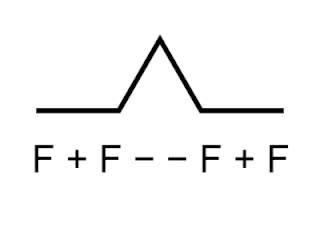
Logo is an educational programming language, designed in 1967 by Wally Feurzeig, Seymour Papert, and Cynthia Solomon. Logo is not an acronym: the name was coined by Feurzeig while he was at Bolt, Beranek and Newman, and derives from the Greek logos, meaning word or thought.

The MIT Media Lab is a research laboratory at the Massachusetts Institute of Technology, growing out of MIT's Architecture Machine Group in the School of Architecture. Its research does not restrict to fixed academic disciplines, but draws from technology, media, science, art, and design. As of 2014, Media Lab's research groups include neurobiology, biologically inspired fabrication, socially engaging robots, emotive computing, bionics, and hyperinstruments.
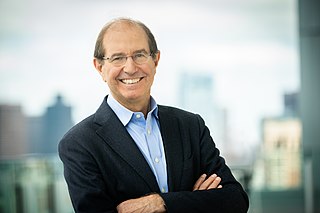
Silvio Micali is an Italian computer scientist, professor at the Massachusetts Institute of Technology and the founder of Algorand. Micali's research centers on cryptography and information security.

Barbara Liskov is an American computer scientist who has made pioneering contributions to programming languages and distributed computing. Her notable work includes the development of the Liskov substitution principle which describes the fundamental nature of data abstraction, and is used in type theory and in object-oriented programming. Her work was recognized with the 2008 Turing Award, the highest distinction in computer science.

Mitchel Resnick is Lego Papert Professor of Learning Research, Director of the Okawa Center, and Director of the Lifelong Kindergarten group at the Massachusetts Institute of Technology (MIT) Media Lab. As of 2019, Resnick serves as head of the Media Arts and Sciences academic program, which program grants master's degrees and Ph.D.s at the MIT Media Lab.
Etoys is a child-friendly computer environment and object-oriented prototype-based programming language for use in education.

The Clubhouse Network, often shortened to "The Clubhouse", is an American nonprofit organization that provides a free out-of-school learning program where young people from underserved communities work with adult mentors to explore their own ideas, develop new skills, and build confidence in themselves through the use of technology. Its motto is "Where Technology Meets Imagination".
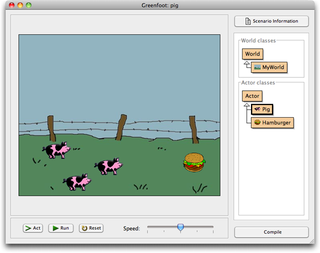
Greenfoot is an integrated development environment using Java or Stride designed primarily for educational purposes at the high school and undergraduate level. It allows easy development of two-dimensional graphical applications, such as simulations and interactive games.
MicroWorlds JR is a computer program using a simplified version of the Logo programming language to teach non-readers or early readers to program in Logo. It was first launched in 2004 by Logo Computer Systems, Inc. (LCSI), and as in their original line of MicroWorlds programs, the object on the screen begins as a turtle and can be controlled with basic commands to make it move. Differing from the Logo syntax developed by Seymour Papert and teams at MIT, MicroWorlds JR uses images to replace the command names, which are selected by the child to create turtle graphics. The turtle object can be given a variety of shapes that act as a costume for the turtle, and therefore lends itself to a variety of animations and creative stories and projects for younger students.
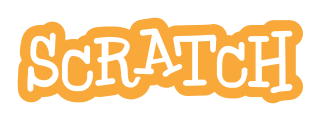
Scratch is a high-level block-based visual programming language and website aimed primarily at children as an educational tool for programming, with a target audience of ages 8 to 16. Users on the site, called Scratchers, can create projects on the website using a block-like interface. Projects can be exported to HTML5, JavaScript, Android apps, Bundle (macOS) and EXE files using external tools. The service is developed by the MIT Media Lab, has been translated into 70+ languages, and is used in most parts of the world. Scratch is taught and used in after-school centers, schools, and colleges, as well as other public knowledge institutions. As of May 8, 2022, community statistics on the language's official website show more than 104 million projects shared by over 90 million users, over 686 million total projects ever created, and more than 100 million monthly website visits.

Amy Susan Bruckman is a professor at the Georgia Institute of Technology affiliated with the School of Interactive Computing and the GVU Center. She is best known for her pioneering research in the fields of online communities and the learning sciences. In 1999, she was selected as one of MIT Technology Review's TR100 awardees, honoring 100 remarkable innovators under the age of 35.

MIT App Inventor is a web application integrated development environment originally provided by Google, and now maintained by the Massachusetts Institute of Technology (MIT). It allows newcomers to computer programming to create application software (apps) for two operating systems (OS): Android, and iOS, which, as of 8 July 2019, is in final beta testing. It is free and open-source software released under dual licensing: a Creative Commons Attribution ShareAlike 3.0 Unported license, and an Apache License 2.0 for the source code.
Yasmin B. Kafai, Ph.D., is a Professor of Learning Sciences at the University of Pennsylvania Graduate School of Education, past president of the International Society of the Learning Sciences (ISLS), and an executive editor of the Journal of the Learning Sciences.
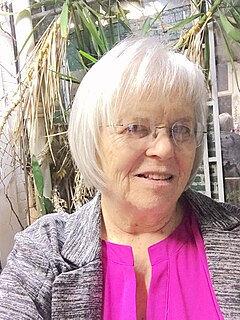
Cynthia Solomon is an American computer scientist known for her work in artificial intelligence (AI) and popularizing computer science for students. She is a pioneer in the fields of artificial intelligence, computer science, and educational computing. While working as a researcher at Massachusetts Institute of Technology (MIT), Dr. Solomon took it upon herself to understand and program in the programming language Lisp. As she began learning this language, she realized the need for a programming language that was more accessible and understandable for children. Throughout her research studies in education, Dr. Solomon worked full-time as a computer teacher in elementary and secondary schools. Her work has mainly focused on research on human-computer interaction and children as designers. While working at Bolt, Beranek and Newman, she worked with Wally Feurzeig and Seymour Papert, to create the first programming language for children, named Logo. The language was created to teach concepts of programming related to Lisp. Dr. Solomon has attained many accomplishments in her life such as being the vice president of R&D for Logo Computer Systems, Inc., when Apple Logo was developed and was the Director of the Atari Cambridge Research Laboratory. Dr. Solomon worked on the program committee of Constructing Modern Knowledge and the Marvin Minsky Institute for Artificial Intelligence in 2016. Further, she has published many writings based on research in the field of child education and technology in the classroom. Dr. Solomon has conducted workshops in elementary schools, high schools, and colleges regarding academic research and writing. She continues to contribute to the field by speaking at conferences and working with the One Laptop per Child Foundation.
Brian Silverman is a Canadian computer scientist, the creator of many programming environments for children, and a researcher in cellular automata.

David J. Malan is an American computer scientist and professor. Malan is a Gordon McKay Professor of Computer Science at Harvard University, and is best known for teaching course CS50, which is the largest open-learning course at Harvard University and Yale University and the largest Massive Open Online Course (MOOC) at EdX, with lectures being viewed by over a million people on the edX platform up to 2017.
Paula Bonta is an Argentinian-Canadian computer scientist and educational software designer. She is known for developing programming environments for children, most notably contributing to the design of the Scratch programming language before it was even called Scratch. She co-founded the Playful Invention Company, a spin-off from the MIT Media Lab noted for developing the Programmable Cricket, with Mitchel Resnick and Brian Silverman and serves as Lead Designer. She was also the design director for several award-winning software products for children, including MicroWorlds and the "My Make Believe" series of products from Logo Computer Systems, Inc. She has a degree in computer science and a graduate degree from the Harvard Graduate School of Education.

Elizabeth "Betsy" DiSalvo is an American professor at the Georgia Institute of Technology School of Interactive Computing. She is known for her research on informal learning, the impact of cultural values on technology use and production, computer science education, and the learning sciences.
Marina Umaschi Bers is a professor at Tufts University known for her work on computational thinking, technology, and tools for children to learn computer programming. She has brought robotics into the classroom through her work on ScratchJr and Blocks to Robots, which includes robotics kits designed for young children.













